How to Cook Brisket in the oven! Everything you need to know about oven-roasted brisket, from tips on how to get the best result to cooking temperatures and more. Pair it with your favorite side dishes for an unforgettable meal!
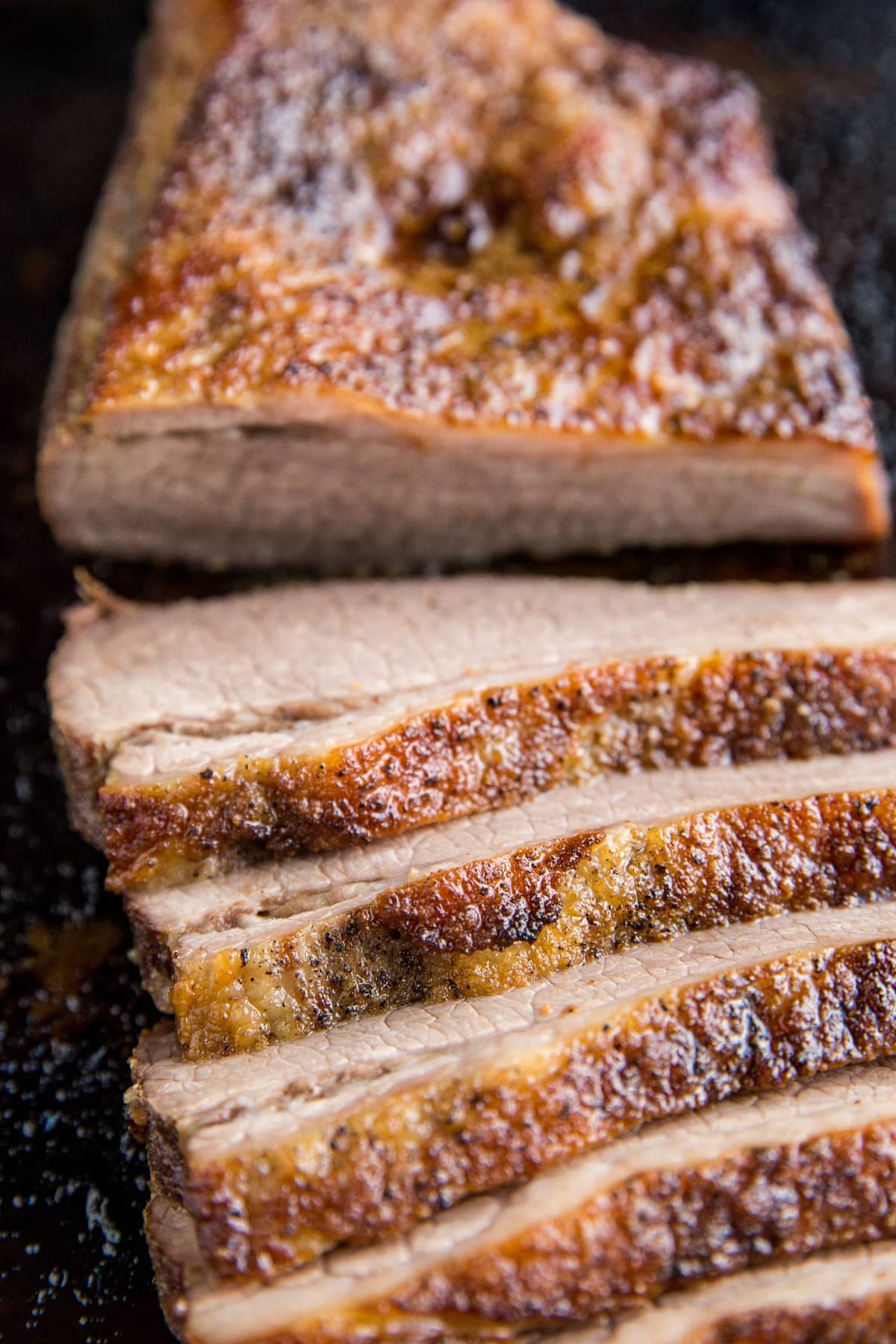
If you’re looking for a goof-proof beef brisket recipe, you’ve found it! Roasting brisket in the oven results in a crispy fat cap and tender, juicy meat.
With a few simple steps, you’ll end up with an impressive centerpiece for special occasions.
The key to perfect brisket is cooking at a low temperature and dry brining the meat before cooking.
A great rule of thumb for cooking brisket in the oven at 250 degrees Fahrenheit is 1 hour to 1 hour and 15 minutes per pound of meat.
Giving yourself time to dry brine the brisket pays dividends. The flavor and tenderness that results is worth the extra time!
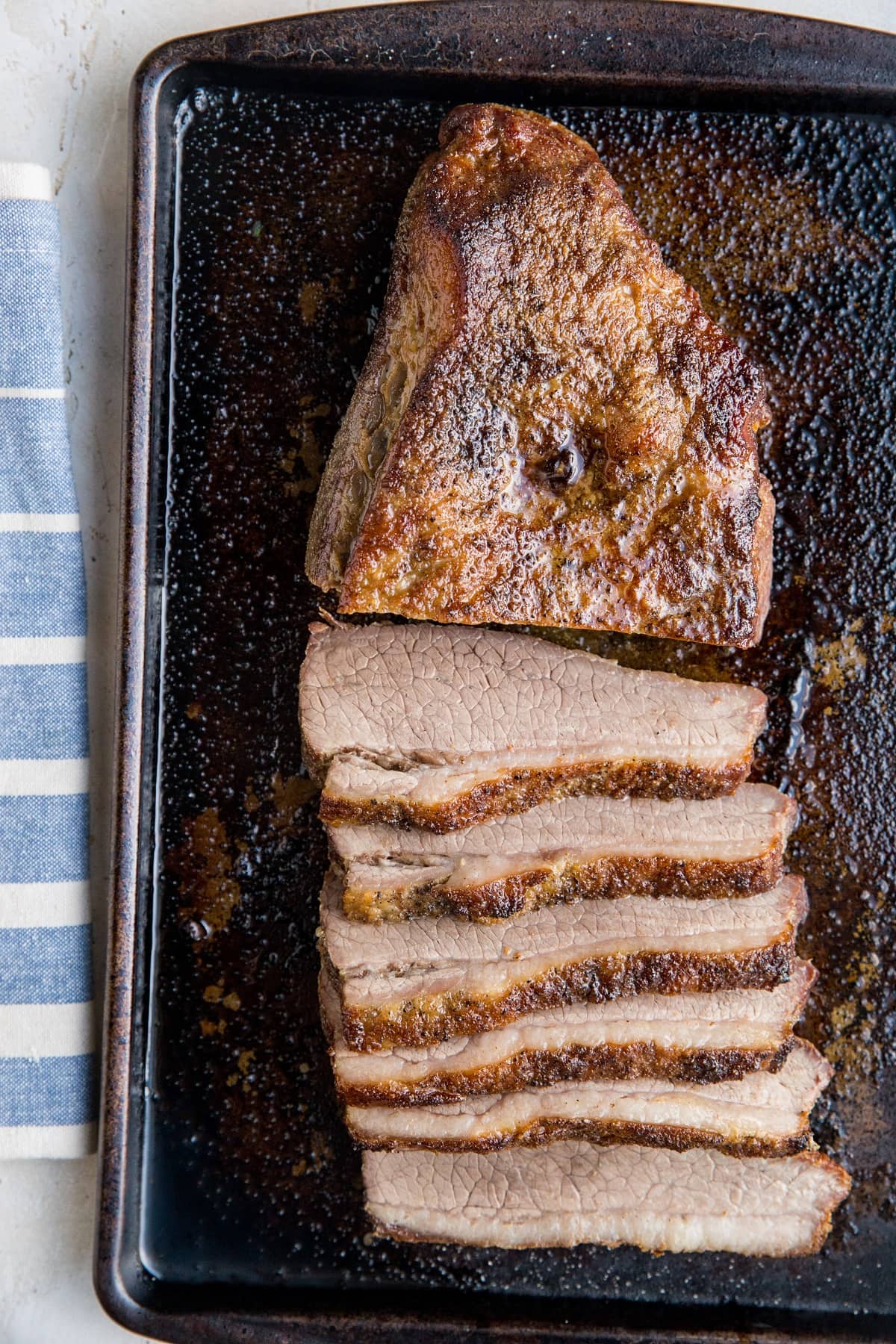
Tips for The BEST Brisket:
Tip #1: Dry Brine Brisket
My number one tip for perfect brisket is dry brining it in advance.
I’ve mentioned this is my Prime Rib Recipe, Perfect Grilled Steak, Beef Tenderloin Recipe and my Smoked Tri Tip , but dry brining your meat 24 hours before you cook it is the best insurance policy for tender meat.
Dry brining meat involves nothing more than placing it on a baking sheet, sprinkling the whole surface (including the sides of the brisket!) with coarse kosher salt and leaving it uncovered in your refrigerator overnight.
Use the same amount of salt as you always would. In essence, don’t over-salt the meat. Instead, season it to your liking.
Dry bringing allows the salt to penetrate deeply into the meat, thereby tenderizing it while seasoning it deeper than you would otherwise get without the dry brine.
Even if you only have an hour or two before you need to cook the brisket, the meat still benefits from spending some quality time with salt. This is both for resulting flavor and juicy texture.
Looking to dry rub brisket? I use my Dry Rub for Beef or Dry Rub for Ribs on just about everything!
You can also use my Best Steak Marinade recipe to marinate the brisket ahead of time by doubling or tripling the recipe. Marinating is similar to wet bringing, which is always a great option too.
Tip #2: Use a Meat Thermometer
My second tip is to always use a meat thermometer to ensure you’re getting the cook you want on any piece of meat.
For taste and texture, brisket should be cooked to 180 to 200 degrees Fahrenheit. Using a meat thermometer will ensure you don’t over or undercook the brisket and that you end up with juicy, tender beef.
I aim for 200 degrees Fahrenheit as my ideal final internal temperature.
Tip #3: Cook Slow and Low
Thirdly, cook brisket at a low temperature for a long period of time.
Brisket is naturally a tough cut of meat, so slow cooking it allows the connective tissues to soften up. While it can be tempting to sear that fat at a high temperature, doing so will likely result in tougher meat.
For this reason, be sure to roast brisket at a lower oven temperature, between 225 to 300 degrees Fahrenheit to achieve tender brisket.
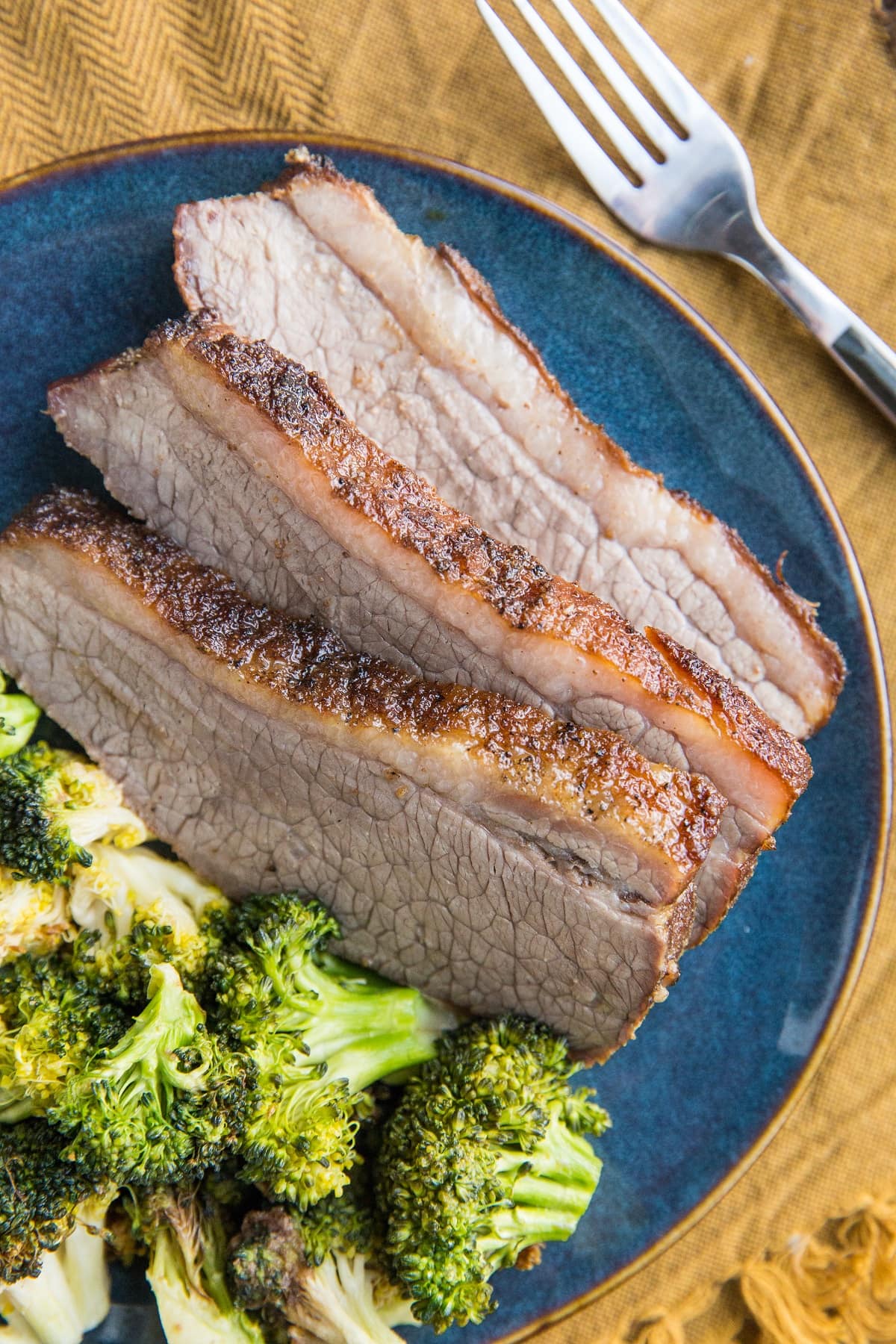
Tip #4: Cut Large Briskets Into Smaller Briskets:
My last tip pertains only to larger briskets.
If you’re wondering how to cook a large brisket, I have a simple solution.
Cut a large brisket (10 to 15 pounds) into two or three smaller briskets. Then, proceed as normal with the recipe, treating each smaller briskets as though they were one.
For example, for a 10-pound brisket, cut the brisket in half, and roast at 225 degrees F for about 5 hours.
Cut a 14 pound brisket into two 7-pound briskets and treat them as one. A 7 pound brisket requires between 7 hours and 8.5 hours at 225 degrees F, so both briskets go into the oven for this length of time.
Remember to use your thermometer!
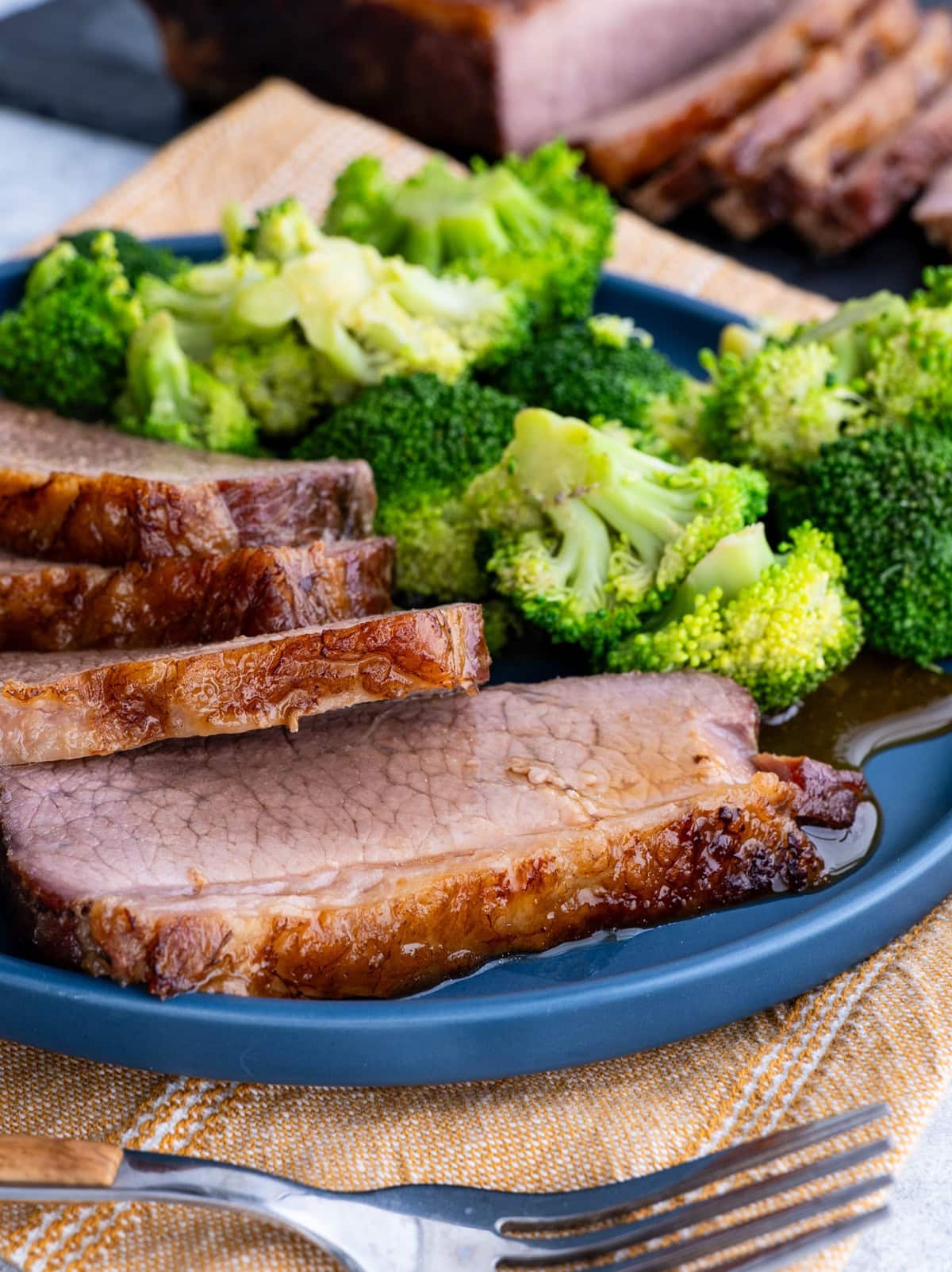
Now that we’ve covered the basics, let’s make the best brisket in the oven!
How to Cook Brisket in the Oven:
Step 1: Dry Brine the Brisket:
Pick up a brisket from your local grocery store or butcher.
Remove the raw brisket from its packaging and pat it dry with a paper towel.
Transfer it to a large baking sheet or roasting pan. Sprinkle the brisket liberally with coarse sea salt, making sure to get the sides as well. Use the same amount of salt as you always would when sprinkling meat. In other words, don’t over-salt the beef. You will not be rinsing the salt off, so too much salt results in salty meat.
Allow the brisket to sit uncovered in the refrigerator overnight or ideally 24 hours.
If you plan on using a dry rub on the brisket, you can do so now rather than waiting to rub the brisket just before baking it.
I’ve found garlic powder, onion powder, and paprika make for a great dry rub!
Step 2: Bring Meat Close to Room Temperature:
At least 30 minutes before you want to cook brisket in the oven, remove it from the refrigerator to allow it to come closer to room temperature. Sprinkle it liberally with garlic powder and black pepper. Don’t add more salt unless you feel you used too little for the dry brine process.
Step 3: Cook Brisket in the Oven:
Preheat the oven to 250 degrees Fahrenheit. Transfer the brisket to a long sheet of aluminum foil with the fat side up. Double wrap the brisket in foil, then place it back on the baking sheet (or roasting pan).
Roast the brisket in the preheated oven until it reaches an internal temperature of 180 to 200 degrees Fahrenheit, about 1 hour to 1 hour and 15 minutes per pound of meat.
Begin checking the internal temperature of the meat 1.5 hours before the calculated estimated time is up.
Once the brisket reaches about 145 degrees F, you can uncover the foil and raise the oven temperature to 350 degrees F to allow the fat to become crispy for the last 45 minutes to 1 hour of baking.
The best way to check the internal temperature of the meat is to use a quality meat thermometer and insert it into the thickest part of the meat. Wait patiently until the thermometer gets an accurate read.
Remember that large roasts will increase in temperature by about 5 to 10 degrees after they are out of the oven, so keep this in mind before you pull it out.
Step 4: Let Brisket Rest:
Once the brisket is out of the oven, allow it to sit for at least 20 minutes to give the juices an opportunity to evenly distribute throughout the meat for the best texture.
Step 5: Serve:
Transfer the finished brisket to a cutting board, reserving the drippings to make au jus for dipping if desired.
Slice meat against the grain of the meat, and serve it with your favorite side dishes.
Store any leftover brisket in an airtight container in the refrigerator for up to 5 days.
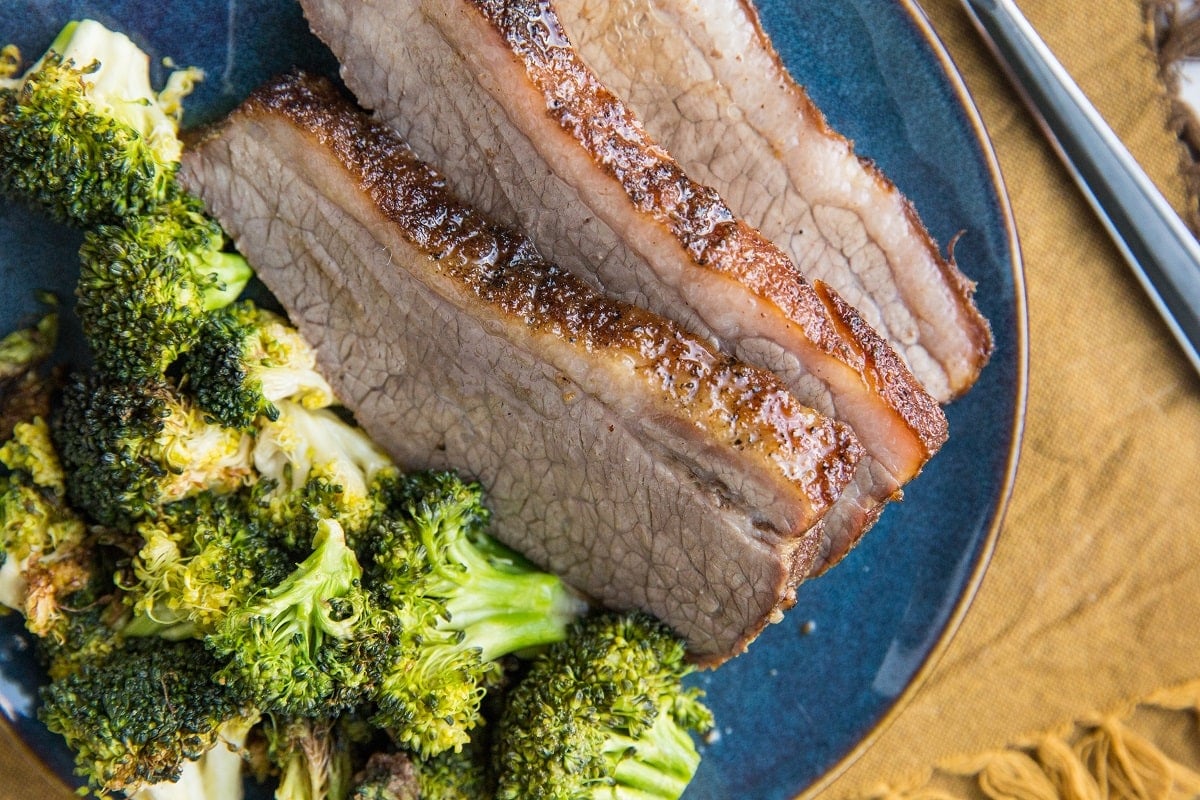
If you want to get real fancy, serve this oven roasted brisket with Bacon Jam or Caramelized Onions and Mushrooms. You’ll be the talk of the town.
How Long to Bake Brisket in the Oven:
At 250 Degrees Fahrenheit: 1 hour to 1 hour and 15 minutes per pound of beef.
At 300 Degrees Fahrenheit: 45 minutes to 1 hour per pound.
For instance, a 5-pound pound brisket takes about 5 hours to 6 hours and 15 minutes at 250 degrees F. Or 3 hours and 45 minutes to 5 hours at 300 degrees F.
A smaller brisket like a 3-pound brisket takes between 3 and 4 hours at 250 degrees F.
Tip: Take the temperature of the brisket after 2 hours of baking, then every 30 to 45 minutes, then more frequently as it gets higher in temperature. The ideal final temperature for brisket is 200 degrees Fahrenheit.
The exact amount of time it takes to cook brisket depends on several factors. The size of the brisket, the temperature of the brisket going into the oven, and the oven temperature all play a role in the total cook time.
Final Temperature For Brisket:
What is the final cooking temperature for brisket? 195 to 205 degrees Fahrenheit is the final cooking temperature for brisket.
Unlike other cuts of beef, the final internal temperature for brisket should always be fully cooked.
This is regardless of your preference for doneness. Even if you love medium-rare steak.
Why is brisket fully cooked? The slow roast process ensures the collagen in the meat has ample time to break down and soften to result in tender meat.
Contrary to other cuts of meat, brisket includes a great deal of muscle and connective tissue, which requires more time to cook.
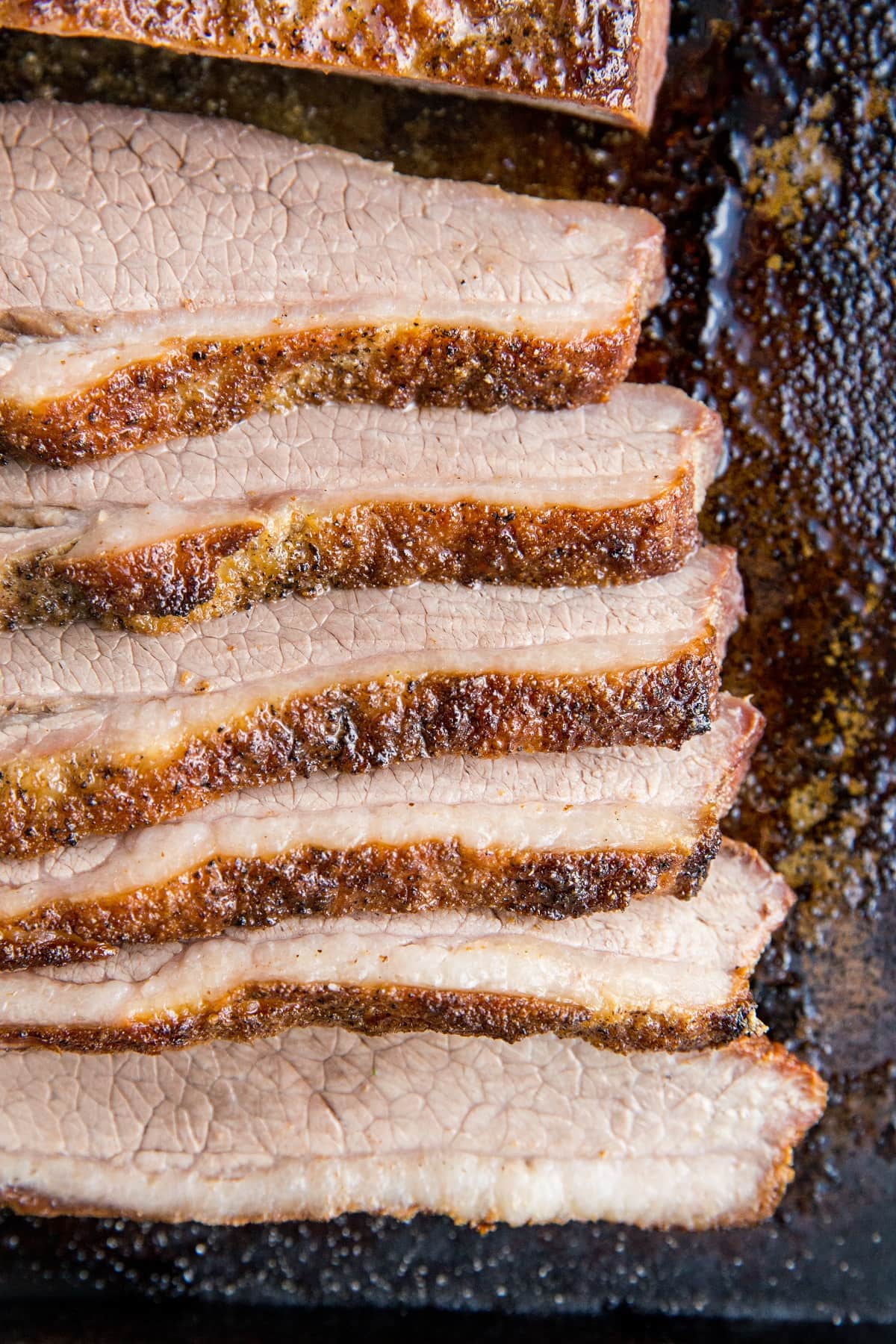
Serve oven-roasted brisket as is, or with barbecue sauce or steak sauce.
Use leftover breakfast in an egg scramble the next day, or for brisket sandwiches.
Store leftover brisket in an airtight container in the refrigerator for up to 1 week.
How Many People Does One Brisket Feed?:
Brisket shrinks substantially during the cooking process, as it loses water and fat is rendered. A 5-pound brisket typically only yields 3 to 3.5 pounds of meat.
Whenever I’m serving guests, I plan for 1 pound of brisket per person. Realistically, most people won’t eat more than half a pound in one sitting unless they have a very large appetite.
In this sense, a 5 pound brisket will comfortably feed about 6 people.
I recommend taking into account the imminent shrinkage of the brisket when deciding how big to buy versus how many people you’re feeding.
To summarize, how much brisket you need is dependent upon the hunger level of your family (or guests) as well as your desire for leftovers.
The general rule of thumb for flavorful brisket is to allow the meat a long time to cook, whether it be in a smoker grill or the oven.
Slow roast oven brisket results in beefy flavor and crispy fat that everyone will love.
What to Serve with Brisket:
Here are some of my favorite side dishes to serve with roasted brisket!
- Italian Salad
- The Best Broccoli Salad
- German-Style Potato Salad with Caramelized Onions
- Pea Salad with Bacon
- Roasted Brussel Sprouts with Garlic and Lemon
- Mayo-Free Macaroni Salad
- Smashed Sweet Potatoes with Garlic Butter and Honey
- Sauteed Mushrooms and Broccoli
And that’s it! Everything you need to know about how to cook brisket in the oven. I hope you enjoy this juicy meaty adventure!
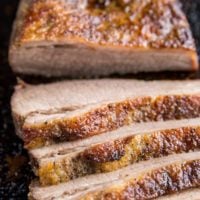
Beef Brisket Recipe
Ingredients
- 1 (3 to 5-pound) beef brisket trimmed to 1/4" of fat
- Coarse sea salt
- Garlic Powder
- Black Pepper
Instructions
- Remove the raw brisket from its packaging and pat it dry with a paper towel. Transfer it to a large baking sheet or roasting pan. Sprinkle both sides of the brisket with sea salt, making sure to get the sides as well. Use only the amount of salt you always would on beef. In other words, season to your personal taste. Allow the brisket to sit uncovered in the refrigerator overnight (24 hours is ideal), or as long as you can before cooking it in the oven.
- At least 30 minutes before cooking, take the meat out of the refrigerator to allow it to come closer to room temperature. Sprinkle both sides liberally with garlic powder and black pepper. Don't add more salt unless you feel you used too little for dry brining.
- Preheat the oven to 250 degrees Fahrenheit. Transfer the brisket to a rimmed baking sheet that is lined with a long sheet of foil. Double wrap the brisket in foil. Roast the brisket in the preheated oven until it reaches an internal temperature of 180 to 200 degrees Fahrenheit, about 1 hour to 1 hour and 15 minutes per pound of meat.
- Once the brisket reaches about 145 degrees F, remove the foil and raise the oven temperature to 350 degrees F to allow the fat to become crispy for the last 45 minutes to 1 hour of baking. The final cooking temperature for brisket is 203 degrees Fahrenheit. Meat continues cooking while it rests, so you can pull it out of the oven around 190 – 195 degrees F and allow it to finish cooking as it rests. Otherwise, pull it out of the oven once it reaches 200 degrees Fahrenheit.
- The best way to check the internal temperature of the meat is to use a quality meat thermometer and insert it into the thickest part of the meat. Wait patiently until the thermometer gets an accurate read. Large roasts increase in temperature by about 5 to 10 degrees after they are out of the oven, so keep this in mind before you pull it out.
- Let meat rest for 20 minutes to give the juices an opportunity to evenly distribute throughout the meat for the best texture.
- Transfer the finished brisket to a cutting board, reserving the drippings to make au jus for dipping if desired. Slice meat against the grain of the meat, and serve it with your favorite side dishes.
- Store any leftover brisket in an airtight container in the refrigerator for up to 5 days.
Video
Notes
Nutrition
This post contains affiliate links, which means I make a small commission off items you purchase at no additional cost to you.
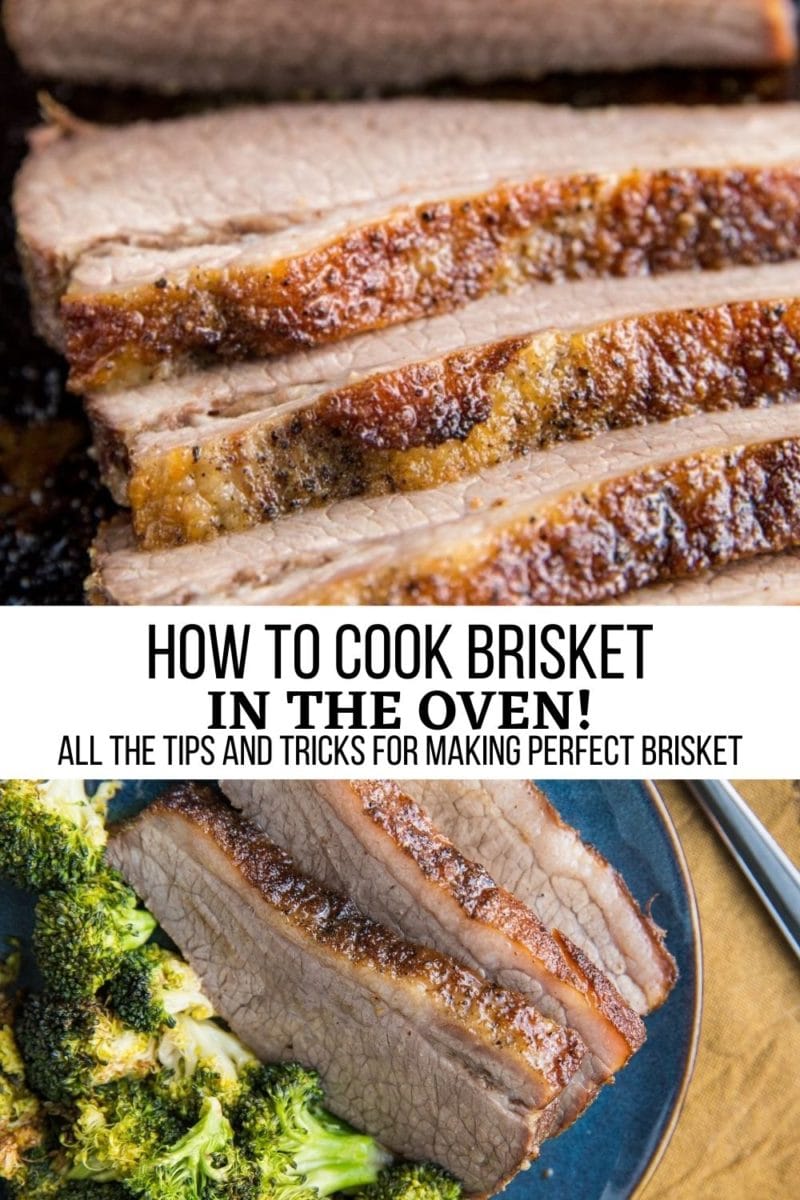

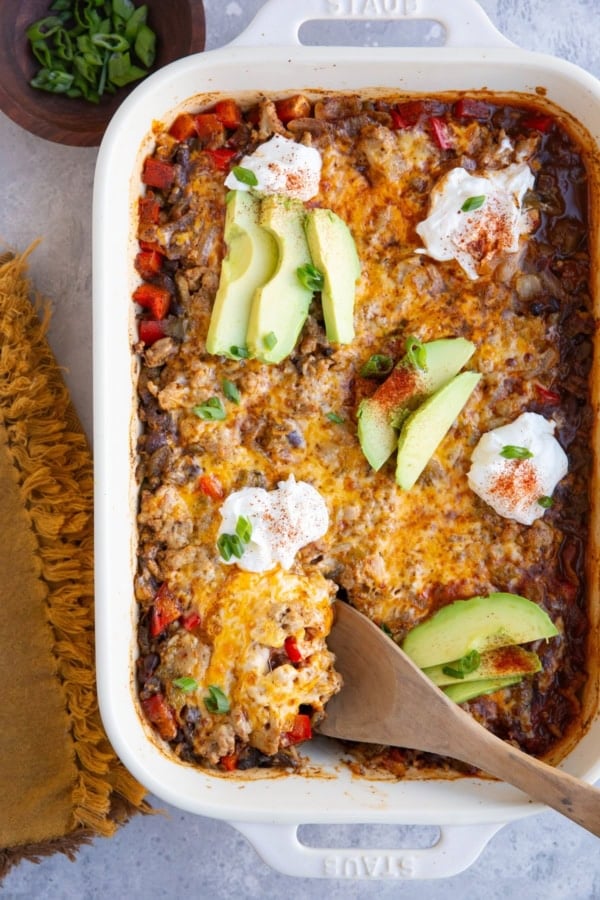
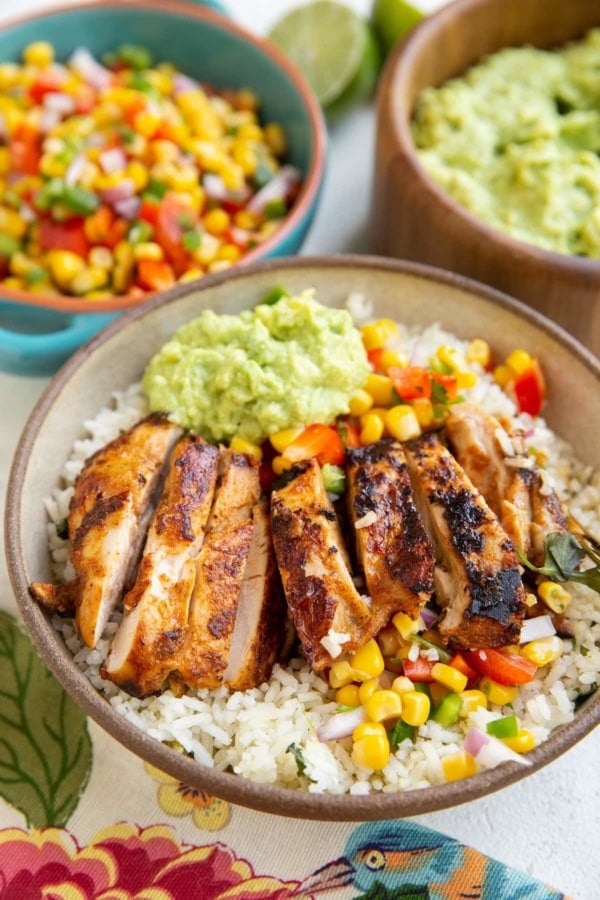
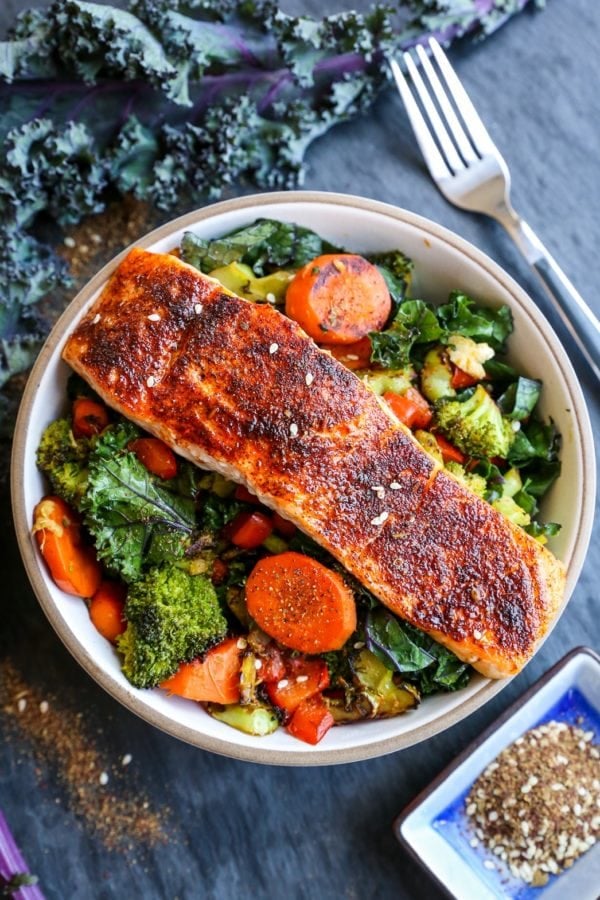
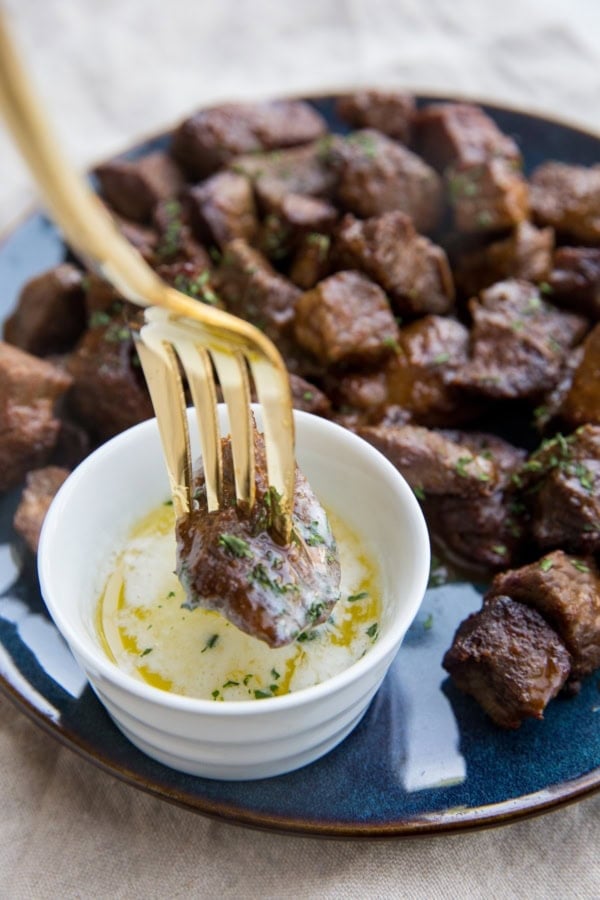









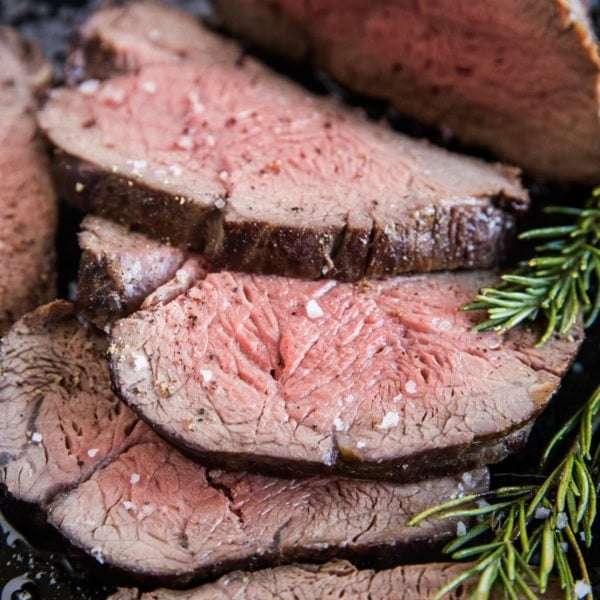
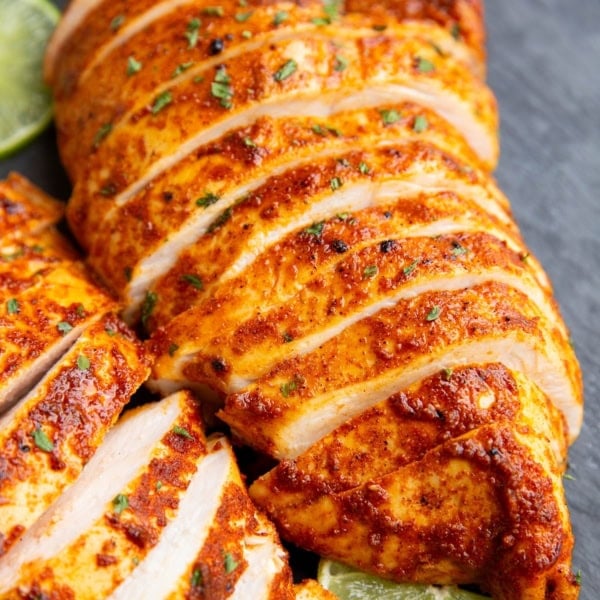
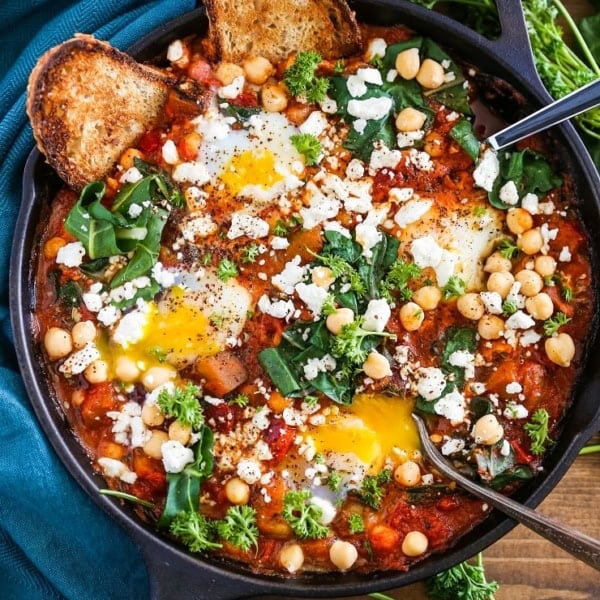
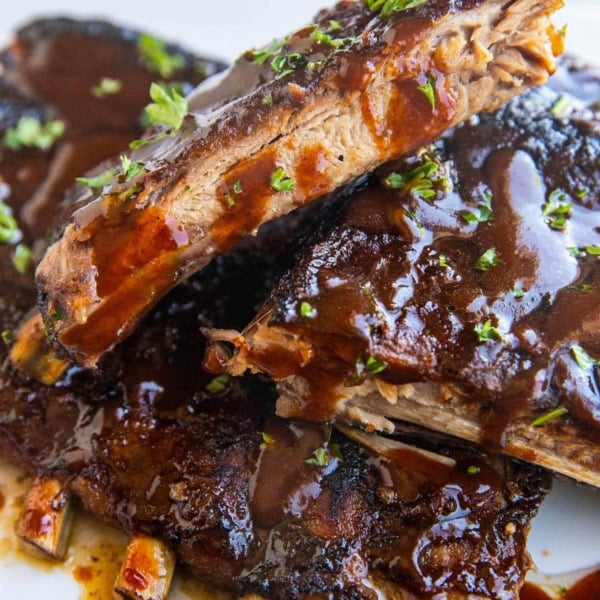
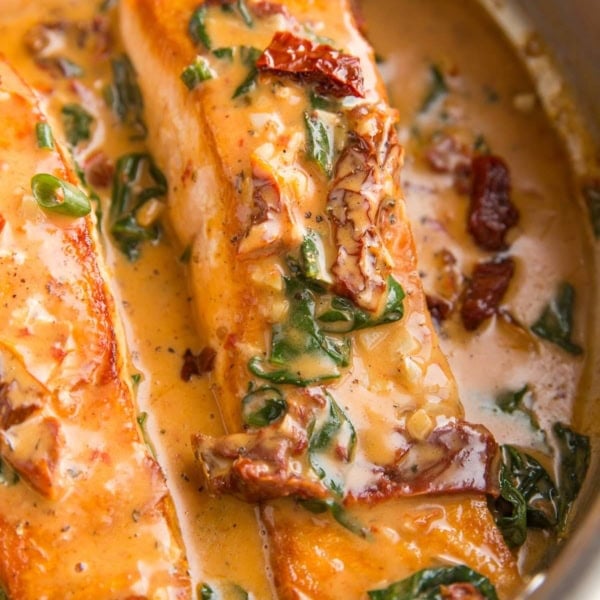
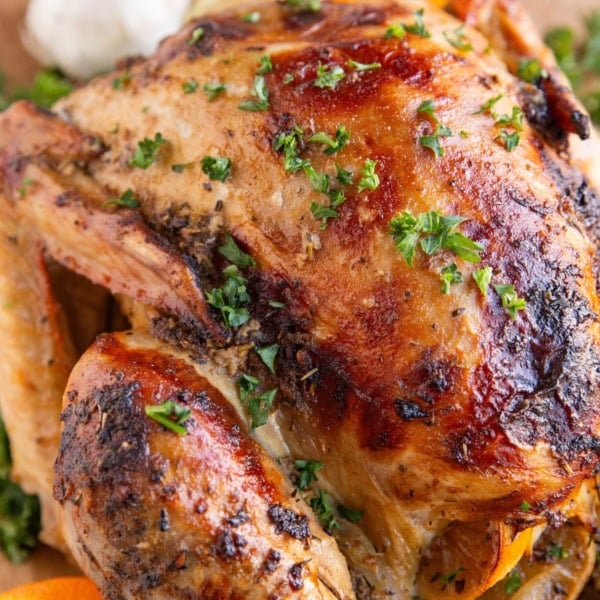
This recipe made the first brisket I ever made SO DELICIOUS! I’ll come back to this over & over again for sure!
That’s great news, Lulu! Thanks so much for sharing! I appreciate you taking the time to leave a glowing review 🙂
This was the best GD brisket I’ve ever made. Thank you!! Moist, flavorful! It just was killer! Maybe the dry brining process is super important or just the slow and low heat but I’ve never made anything this good.
One of the best GD comments ever 🙂 I’m happy you experienced such great success with the brisket! I appreciate the glowing review!
I am baking or roasting a 11 pound brisket in my over at 225 degrees. How long should it take to bake. It is kind of round almost like a partially flat ball.
Thanks
I’m baking a 6 lb, an 8 lb and a 9 lb. brisket for Easter. They are the same thickness but the 9 lb is just longer. I feel like common sense would tell me to bake them all for the same amount of time. Thoughts? I feel like 6-7 hours is plenty long.
Hi Gail! I would think the same as you, although more total mass might necessitate more time. For this reason, I would think it’s possible the 8 and 9-pounders might take a little longer than the 6 pounder. The great thing about brisket is it isn’t intended to be cooked to a perfect medium-rare, so there is plenty of wiggle room on the timing. Keep that thermometer handy for the best result!
Beautifully Written. I am new in cooking arena. I love recipe related to smoker. I am going to try this recipe in a smoker.
I’m confused by the internal temperature recommendations. I’m supposed to let it get to 180-200 F and then bring it down to 145F? Once it reaches 180 F, isn’t it well done?
Hi Dale! My apologies for the confusion. The final cooking temperature for brisket should always be cooked to just over 200 degrees (203 to be exact). In this sense, brisket shouldn’t be served medium-rare or medium – it should always be served well done.
You can increase the oven temperature to 300 degrees F once the brisket is close to being finished (once the internal temp of the meat is around 145 degrees) so that the fat gets a little golden brown sear on it. If you aren’t as concerned with getting an outer crisp on the meat, you can cook brisket at 250 degrees the whole time. Let me know if you have any other questions!
Hi, I would like to make a coffee rubbed brisket. My recipe for the rub calls for 1 cup coarse kosher salt, 2 cups sugar, 1/2 cup ground espresso, and about 6 tbsp of a few other spices. Would I rub this all on the brisket the night before cooking as part of the dry brine? Or just rub the salt on and then rub the rest of the dry rub on right before baking?
Hi Monika! I would apply the dry rub to the brisket the night before and let it sit in the refrigerator overnight 🙂 The salt in the rub will act as the dry brine. Plus, the flavors from the rub will make their way into the meat as well. Sounds like a delicious rub! xo
When you told Mary not to adjust the time for 3 5-pound briskets, did you mean to bake as though for one 5-lb. or one 15-lb. piece of meat? I’m baking 2 5-lb. briskets wrapped together in foil. Thank you!
Hi Trish! It doesn’t take any longer to bake two at the same time 🙂 So the amount of time should be based off of one 5-pound brisket, which should take around 6 hours to 6 hours 15 minutes at 250 degrees F. If you decide to bake the briskets at 300 degrees F, they should take about 5 hours. Let me know if you have any other questions!
Every Oven cooks differently, I never nor will I ever drop what I’m baking ,cooking, broiling and trust a time on a certain food , I check on what I’m cooking every 30 minutes to every hour I check and after 2 hours on a brisket i take completely out of oven to make sure it’s cooking evenly and correctly, Trusting a recipe because you read it dosent make it accreditation true , better to be safe than sorry and with the price of beef or groceries in general the waste is too great to gamble. This worked out to perfection, I like the sweet with heat taste so dose my entire family, every Christmas I now have been given the duty of preparing and cooking a Brisket 15-18 Lb , And enjoy doing so .
Thanks so much for the sweet note! I appreciate you sharing all of that – I love your approach to cooking brisket, and highly suggest others do the same 🙂 xo
@Lobo Wynn,
Can you share your process for a brisket that size? Have a 14 lb I will be making for the first time this Christmas. Thank you 🙏
@Tori, I’m Alice T.SxPx I’m a virgin brisket oven baker too. I did a brisket rub with quarter cup of core salt or kosher salt and 1/4 cup half cup pepper and then the rest was quarter cup of all the other stuff like celery salt, oregano smoked paprika and I did rub it over 24 hrs . I experimented on smaller portion of this seem like a 17 pound brisket and it came out somewhat. OK a little bit dry I took it out, I put parchment paper and foil over the top under all the sliced onions, celery course cut carrots and I reduced the veggies took all the veggies out and reduced. I poured a little wine prioraround the edges like a 1 cup on the bigger piece I am in the process of baking it the thinner piece I took out and put in the oven open at 400° to give it a toast to it and the bigger piece is still in the oven covered with the it at 170 going to wait to 200 internal temp I’m thinking 200. It’s been in the oven about three hours. I’ll have to remember to cut it.agaist the grain. Prayers and waiting on Wynn process. I was at B.B. King in NOLA and macaroni cheese, caramelize onions with brisket debris the bomb, just saying for leftovers.
@Lobo Wynn, do I leave the dry brine on the brisket or remove before cooking? Thanks.
Hi Janice! Leave the dry brine on 🙂
Depending on how you like your meat seasoned, you may or may not want to add more salt after doing the dry brine. If you like saltier food, you can add more salt along with any other seasonings you like, such as garlic powder, onion powder, etc. before cooking. If you prefer less salty food, stick with just the dry brine and don’t add any more salt before cooking. Let me know if you have any other questions! xo
Just ruined a perfectly good 7 pound brisket on this recipe. According to the “formula”, I should have had it in the oven for 7+ hours. After 5 hours I decided to check on it and the temperature read 211°. Unfortunately, I couldn’t save it and although the flavor isn’t bad, it’s overdone and as dry as my mother-in-law’s Thanksgiving Turkey. In hindsight, I probably should have been checking on the temperature throughout the cook time and maybe I would have caught this and been able to pull it out faster. So now, anyone have any suggestions what I can do with 7 pounds of dry brisket?!!
@Becky, add vegetables and make a hearty stew
@Shell, add the crumpled up meat to a good pot of BBQ baked beans.
Put meat in a soy, sesame, ginger and chopped garlic mixture add veggies and noodles and make a basic stir fry.
@Becky, hi Becky probably be okay in a Reuben soup.
just tried this recipe… I THOUGHT I followed it exactly – including brining overnight, lots of salt, bringing to room temp and using type meat thermometer. It had some flavor, but was tough and salty…..wasted a brisket :(. What did I do wrong??? 🙁
I think 8 – 10 hours might have been a better idea…..
Hi Sally, did you use iodized salt or sea salt? Sea salt is less salty, which is what I always recommend for the dry brine. If you used regular table salt, I can definitely see how it turned out too salty. Or it could be you prefer less salt, in which case you would either want to use less salt for the dry brine, or have it brining for less time (or both).
I couldn’t get a 15lb brisket to bake so I bought three 5lb ones. Want to bake all three together in a foil disposable pan. How do I adjust baking time at 300 degrees?
Hi Mary! You shouldn’t need to adjust anything. I’d just be sure to keep an eye on the temperature of each of the briskets, but everything should stay the same.
I’ve always cooked my brisket in the oven and I always use this super simple recipe.
1) Get a 10-14 lb. Brisket
2) Get an aluminium roaster pan
3) Large bottle of Coke
4) large bottle of Claude’s Brisket Marinade
Put brisket in pan,fat side down, pour Coke until it’s about halfway up the side of the brisket, pour the Claude’s over the meat, seal pan with aluminum foil cook in a 275°oven for 8 to 10 hours…… Never Fails
Love that! I’ve never tried it using the coke method. I’ll have to give that a try!
Do you still do a dry rub with the coke and marinate